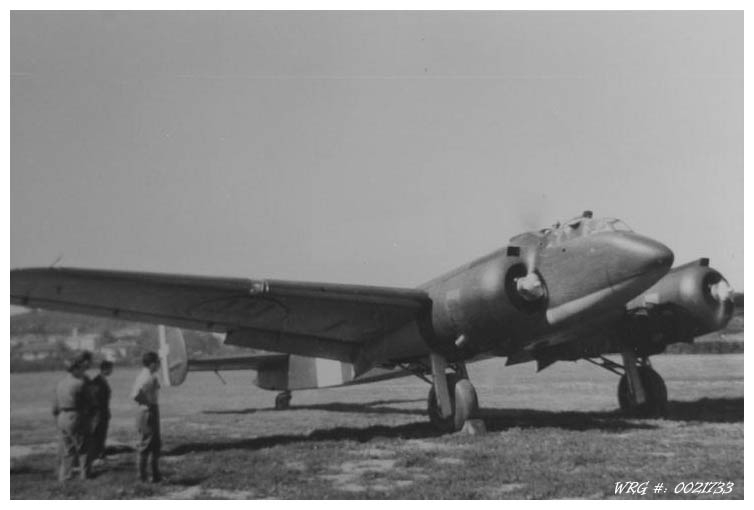REGIA AERONAUTICA ITALIANA > BOMBERS > PREVIOUS PAGE

The SM.89 was a two-engine aircraft and did not have a nose engine, unlike many contemporary Italian designs. Because of this design feature, the nose could be used to house weapons. The nose section was rounded, short and much inclined, to assure the best visibility for attack. The weaponry was mainly based on the 37 mm (1.46 in) Breda anti-aircraft guns, used in the anti-tank and anti-ship role. Three 12.7 mm (.50 in) Breda machine guns were also fitted in the nose. A further Breda was also fitted in the dorsal turret, and another was in a new model turret, a remote-controlled one, in the ventral position.
The aircraft could carry 700 bomblets or 1,400 kg (3,090 lb) of bombs or torpedoes under the belly. The aircraft could also be fitted with air brakes for dive bombing. The aircraft's speed also made it possible to use the aircraft as a bomber interceptor, however it was never fitted with a radar.
The Piaggio P.XI engines developed insufficient power for the aircraft, so instead, they used two Piaggio P.XII RC.35s, which could develop 1,119 kW (1,500 hp) at take-off. These engines were in a more compact installation than those of the Piaggio P.108s and CANT Z.1018s. The aircraft could also carry 2,700 L (710 US gal) of fuel in self-sealing fuel tanks, which gave the aircraft an effective range of 720 km (450 mi).
This SM.89 had significant armor protection with 300 kg (660 lb) of armour in the front and windscreen, another 300 kg (660 lb) of armour protected the engines, and a further 80 kg (180 lb) for the aft armour.
Source:
WikiPedia
REGIA AERONAUTICA ITALIANA > BOMBERS > PREVIOUS PAGE
